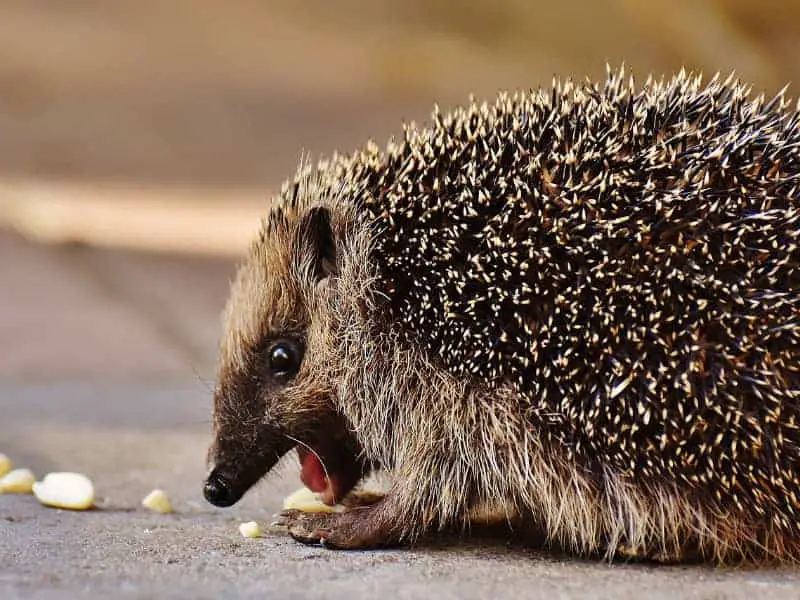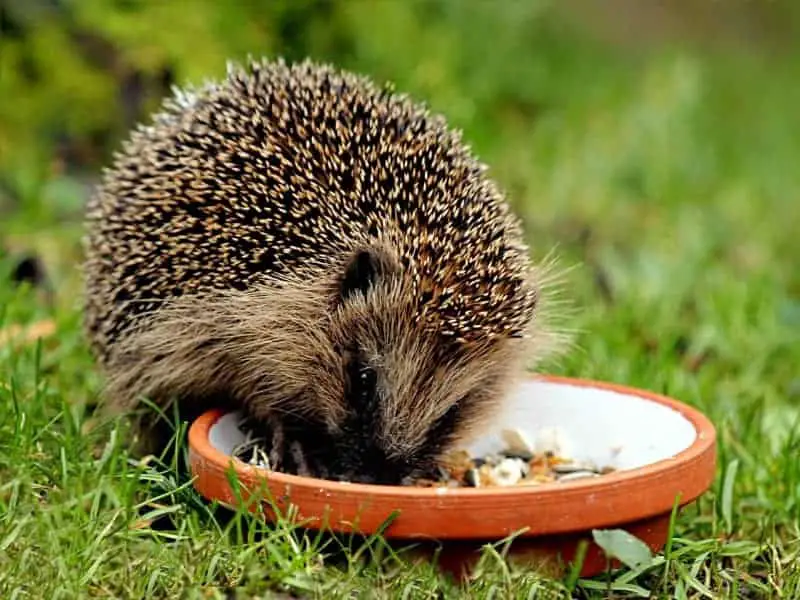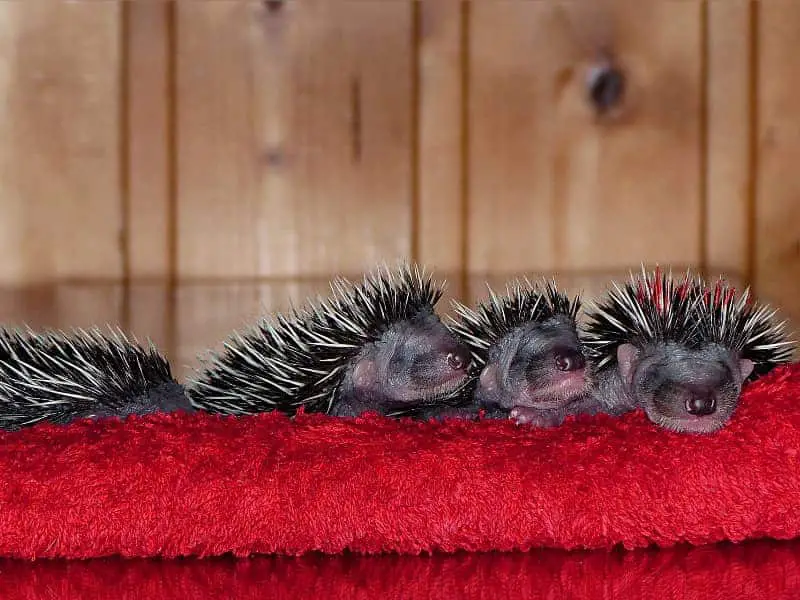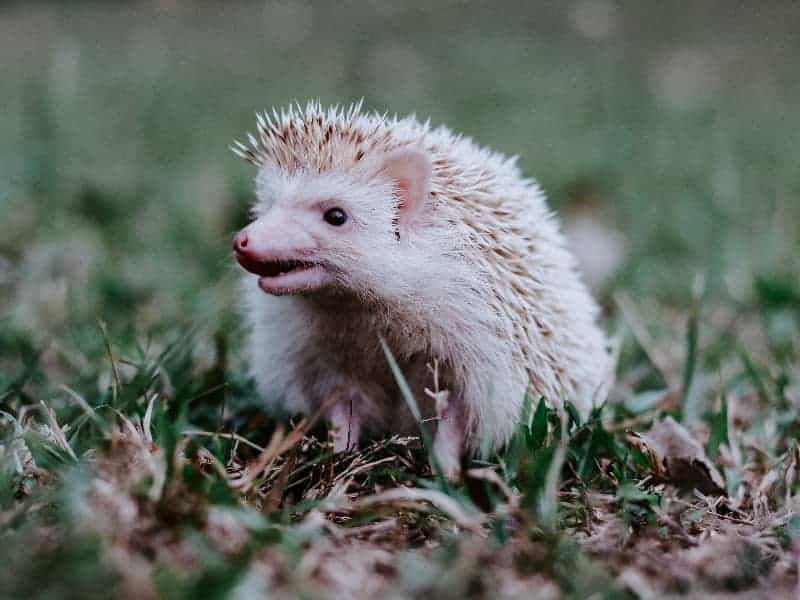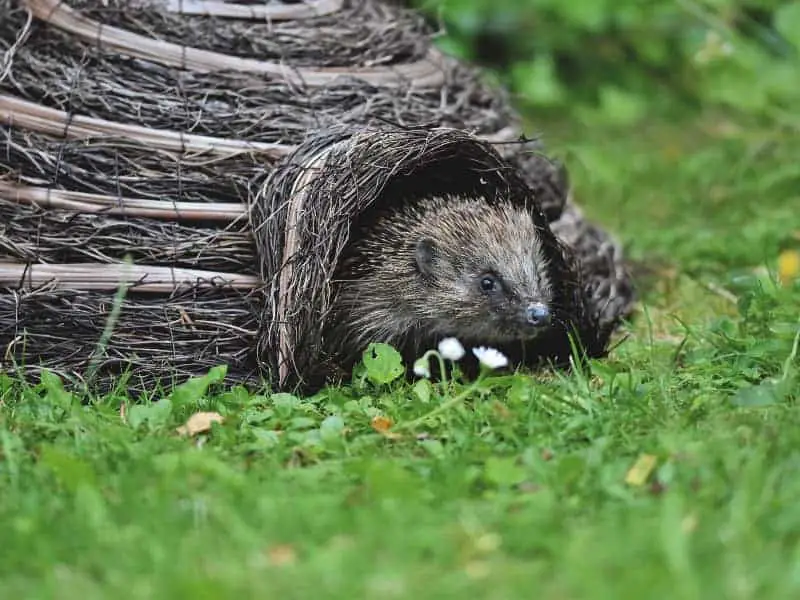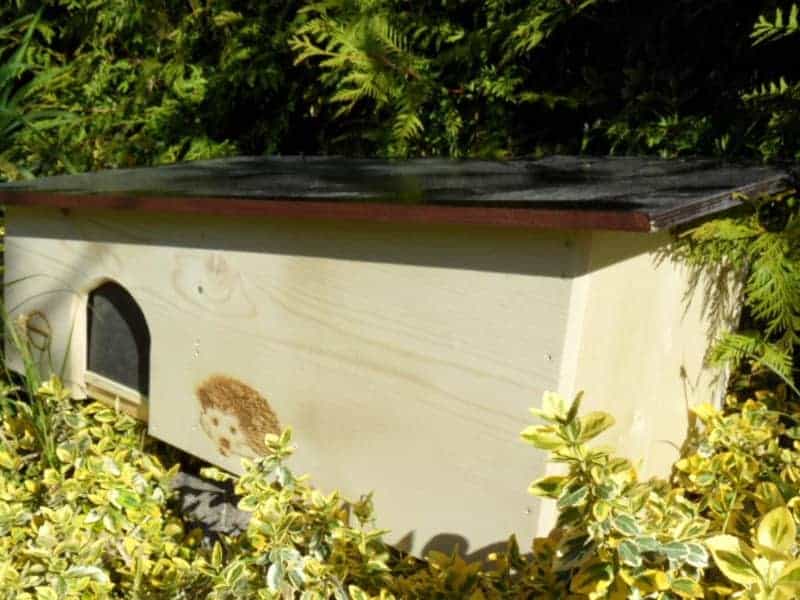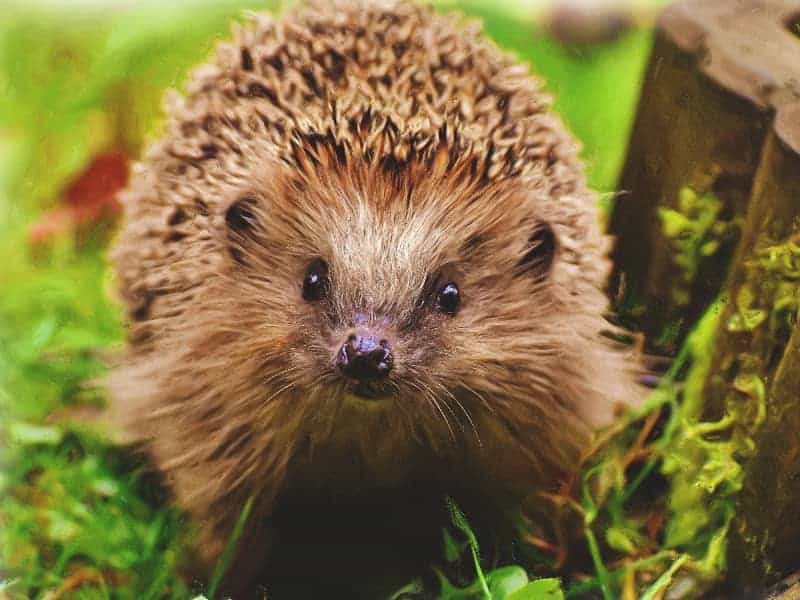
Hedgehog release
The reintroduction of hedgehogs into the wild is a fascinating and important topic that is close to many people's hearts. In this comprehensive guide, we look at all aspects of releasing hedgehogs back into the wild. From recognizing hedgehogs in need of help to choosing the ideal habitat - we cover it all.
- Hedgehog release
- What is the reintroduction of hedgehogs?
- Hedgehog anatomy and behavior
- Recognizing hedgehogs in need of help
- Before the release
- Best time to release hedgehogs into the wild
- Releasing hedgehogs into the wild - The right habitat
- Steps of the reintroduction
- Food and feeding places
- After the release
- Conclusion: Release hedgehogs into the wild
What is the reintroduction of hedgehogs?
Hedgehog reintroduction refers to the process of releasing hedgehogs that have been raised or cared for by humans back into the wild. It is a responsible task that requires a great deal of knowledge and experience. Often orphaned or injured hedgehogs are taken in by humans to provide them with a safe environment and the necessary care. As soon as they are fit enough - both in terms of health and weight - they can be released into the wild in a suitable habitat.
Why is release into the wild important?
Release into the wild is an important step in the life cycle of a hedgehog that has needed help. It allows the animal to lead an independent life in the wild, where it can behave naturally. However, reintroduction is more than just opening a cage door. It requires careful planning and preparation to give the hedgehog the best chance of survival. This includes ensuring that the habitat in which the hedgehog is released is safe and suitable for the animal.
When is it appropriate to release them into the wild?
Release into the wild is appropriate when the hedgehog is physically fit and sufficiently heavy, usually weighing at least 600 grams. The animal should also be free of disease and parasites. Ideally, release should take place in the warmer months of the year, when food sources are plentiful and conditions are optimal for the hedgehog. However, there is no one-size-fits-all rule for the perfect time; sometimes the decision depends on individual factors, such as the hedgehog's state of health and specific needs.
Hedgehog anatomy and behavior
Before embarking on the reintroduction of hedgehogs, it is helpful to know more about the anatomical characteristics and natural behavior of these animals. This makes it easier to assess whether a hedgehog is ready to be released into the wild and how to make the transition as easy as possible.
Physical characteristics of hedgehogs
Hedgehogs are small mammals with a body size of around 20 to 30 cm and a weight that can vary between 400 and 1200 grams. They are known for their spiny surface, which is made of keratin - the same material that human hair and nails are made of. These spines serve as a defense mechanism against predators. A healthy Hedgehog has shiny spines without visible damage. The skin should be clean and there should be no signs of parasite infestation such as fleas or mites.
Behavior in nature
Hedgehogs are mainly nocturnal animals that hide in a nest of leaves and grass during the day. They are solitary animals and mark their territory with a special scent. In the wild, they are omnivores, feeding mainly on insects, worms and snails. A healthy hedgehog is curious and active. It should be able to stand up and form a ball if it feels threatened. A lethargic or disoriented hedgehog could be a sign of health problems.
Hedgehogs in winter and summer
In winter, many hedgehogs hibernate to conserve energy, while in summer their food intake and activity levels increase. Hibernation usually lasts from late fall to early spring and is an important factor when planning a release. A hedgehog found hibernating should not usually be released until higher temperatures are reached and food is plentiful.
Recognizing hedgehogs in need of help
It is crucial to know when a hedgehog really needs help and when it is better to leave it in its natural environment. This knowledge enables us to make responsible decisions about releasing them back into the wild.
Health indicators
A healthy hedgehog has clear eyes, a moist nose and shiny spines. Behavioral indicators of a healthy hedgehog are activity, curiosity and the ability to curl up into a ball when in danger. Also pay attention to weight; an adult hedgehog should weigh at least 600 grams before being released into the wild. An underweight or lethargic hedgehog, perhaps even with visible injuries, may be in urgent need of human help.
Behavioral problems
A hedgehog that is active during the day, moves without orientation or has difficulty rolling up is probably in need of help. A healthy hedgehog should also not be attracted to humans. If you find a hedgehog lingering around human activity or eating food from your hand, this is an alarm signal that something is wrong.
Environmental conditions
The environment in which a hedgehog is found can also give clues to its condition. A hedgehog found in a busy road, near toxic substances or in an area with no visible food sources could be in danger. Such environments are dangerous for hedgehogs and provide poor conditions for a successful release.
Recognizing hedgehogs in need of help is the first step in a complex process aimed at enabling these fascinating animals to live long, healthy lives in their natural environment.
Before the release
The pre-release phase is crucial to the success of the whole process. A comprehensive health check, weight and nutrition monitoring and the selection of a suitable release site are essential elements that need to be carefully considered.
Health check
A thorough health check is essential before a hedgehog is released into the wild. This should be carried out by a vet who has experience with wild animals. The check should cover basic parameters such as body temperature, heart rate and respiratory rate. It is also important to check for parasites, skin diseases and other potential health problems. The hedgehog should also be checked for signs of infection or injury and, if necessary, treatment should be given before the hedgehog is released.
Weight and nutrition
The weight of the hedgehog is a decisive factor for release into the wild. An adult hedgehog should weigh at least 600 grams in order to survive in the wild. Nutrition is also a crucial aspect that strongly influences the condition of the hedgehog. Before being released into the wild, the hedgehog should be fed a balanced diet rich in protein and nutrients. Feeding special hedgehog food and insects can be helpful here. During the care phase, meals should be planned in consultation with a vet.
Selection of a suitable location
Another important factor is the selection of a suitable release site. The location should be safe, free from road traffic and ideally far away from human settlements. In addition, the habitat should be rich in natural food sources and shelter such as bushes, hedges and leaf piles. Also pay attention to the presence of natural enemies; an area with a high number of predators is unsuitable for the release of hedgehogs.
These precautions can make the difference between a successful and a failed release and should therefore be taken with the utmost care.
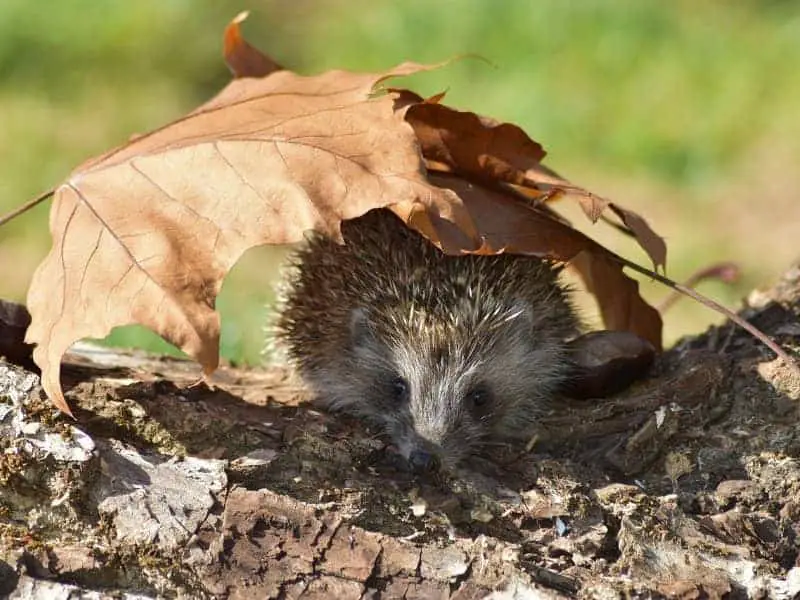
Best time to release hedgehogs into the wild
The time of reintroduction is crucial to the success of this endeavor. Various factors such as time of day, season and weather conditions play an important role in how well a hedgehog can adapt to its new life in the wild.
Time of day
The best time of day to release a hedgehog into the wild is late afternoon or early evening. This is when hedgehogs usually start to become active and forage for food. Releasing them into the wild during the active phase increases the chances that the hedgehog will quickly adapt to its new environment and start foraging for food on its own.
Season
The best time of year for reintroduction is late spring to early fall. At this time, temperatures are milder and food is usually plentiful. Releasing hedgehogs into the wild in winter is generally not a good idea, as they hibernate and food sources are scarce. It is also advisable not to reintroduce them during the main mating season in summer, as this could cause additional stress for the hedgehog.
Weather conditions
The ideal weather for reintroduction is mild and dry. Extreme conditions such as heat, cold or heavy rain can increase stress for the hedgehog and reduce its chances of survival. A release into the wild should therefore be avoided if extreme weather conditions are forecast.
Careful selection of the best time for release can make the transition much easier for the hedgehog and increase its chances of a successful life in the wild.
Releasing hedgehogs into the wild - The right habitat
Choosing the right habitat is another crucial factor for the success of the reintroduction. Different environments offer different benefits and challenges for hedgehogs, from gardens to woodlands and open landscapes.
Releasing hedgehogs into the wild in the garden
A garden can provide an excellent environment for a hedgehog, provided it is safe and well designed. The garden should contain dense shrubs, hedges and piles of leaves for hiding places, and a fresh water source should be available. Poisonous plants and pesticides should be avoided as they can be harmful to hedgehogs. A well-designed garden can provide a rich source of food and a safe haven, which will make acclimatization easier.
Forest area
A wooded area offers the hedgehog numerous hiding places and a rich selection of food such as insects and worms. However, woodland areas can also harbor natural enemies such as foxes or birds of prey. It is also important to ensure that the woodland is not too remote so that the hedgehog can reach human help if necessary.
Releasing hedgehogs into the wild in the open countryside
Open landscapes such as fields or meadows are less ideal for releasing hedgehogs into the wild. Although these areas can provide sufficient food, they often lack adequate hiding places, which makes the hedgehog more vulnerable to predators. In addition, open landscapes can be exposed to more severe weather conditions, which can further stress the hedgehog.
Each habitat has its own advantages and disadvantages, and the choice should be made based on the specific needs of the individual hedgehog. Factors such as the availability of food and hiding places as well as the absence of hazards should be taken into account.
Steps of the reintroduction
Releasing a hedgehog back into the wild is a multi-stage process that should be well planned and carefully carried out. The preparation of the area, the actual release process and the aftercare all play an important role.
Preparation of the area
Before the hedgehog is released into the wild, the selected area should be carefully prepared. The tasks to be carried out include removing potential hazards such as sharp objects or exposed wires and creating a small shelter with leaves and twigs where the hedgehog can hide for the time being. A shallow bowl of fresh water should also be placed nearby to help the hedgehog with its initial exploration.
The reintroduction process
The actual process of releasing the hedgehog into the wild should be calm and stress-free. It is best to release the hedgehog from a box or other secure container directly into the prepared shelter. The hedgehog should then be given sufficient time and space to explore its new environment at its own pace. Forced or hasty movements should be avoided in order to minimize stress for the animal.
Releasing hedgehogs into the wild - aftercare
After release into the wild, it makes sense to monitor the area regularly for the first few days to ensure that the hedgehog is settling in well. However, you should keep a sufficient distance so as not to disturb the animal. If possible, you can also put out food to help the hedgehog find food. However, it is important to gradually reduce this help so that the hedgehog learns to survive on its own.
By carefully planning and carrying out these steps, the release of a hedgehog into the wild can be made successful so that the animal has the best chance of finding its feet in its new environment.
Food and feeding places
Nutrition plays a crucial role in the health and well-being of a hedgehog, both in human care and in the wild. Below we will look at what hedgehogs eat, how to set up feeding stations and what natural food sources are available.
What do hedgehogs eat?
Hedgehogs are primarily insectivores. Their diet consists mainly of insects, worms, snails and sometimes small fruits. They are very adaptable and can feed differently depending on the availability of food. It is important to emphasize that not all foods found in nature are suitable for hedgehogs. Dairy products and bread, for example, should be avoided as they can be harmful to hedgehogs.
Release hedgehogs into the wild - set up feeding stations
If you want to support the release of a hedgehog into the wild, setting up a feeding station can be helpful. This should be set up in a quiet, sheltered place. Special hedgehog food mixtures, which are commercially available, or simple cat food are suitable. Fresh water should always be available. However, the feeding station should not lead to a permanent dependency; it is therefore important to gradually reduce the amount of food put out.
Natural food sources
For a successful reintroduction, it is also important that there are sufficient natural food sources in the chosen area. These include compost heaps, which attract insects, or damp areas where worms and snails can be found. An area with a variety of natural food sources offers the hedgehog the best chance of successfully adapting to life in the wild.
Understanding the nutritional needs of a hedgehog and preparing accordingly can make a significant contribution to a successful reintroduction.
After the release
The responsibility for the hedgehog does not necessarily end with the release into the wild. Long-term observation and understanding of the signs of a successful reintroduction are just as important as dealing with hedgehogs that may return.
Long-term observation
It is advisable to observe the area where the hedgehog has been released over a longer period of time. However, it is important to keep a respectful distance so as not to disturb or stress the animal. The observation serves to ensure that the hedgehog has settled in well and has no visible problems such as illnesses or injuries.
Signs of successful reintroduction
Positive signs of a successful reintroduction can take various forms. These include a healthy weight, active foraging and building its own shelter. If you notice that the hedgehog is finding its way around its new environment on its own and is not seeking human help, this is a good sign that the reintroduction has been successful.
Dealing with returning hedgehogs
In rare cases, it can happen that a hedgehog that has been released back into the wild returns. This is not necessarily a sign of a failed reintroduction. Nevertheless, in such a case it should be carefully checked whether the animal is healthy or requires medical care. If the hedgehog appears healthy, another attempt to release it back into the wild in a more suitable environment can be considered.
Aftercare is an important aspect of reintroduction and should not be neglected in order to give the hedgehog the best chance of survival in its new environment.
Conclusion: Release hedgehogs into the wild
The topic of releasing hedgehogs back into the wild is not only important for animal lovers, but also from an ecological point of view. In this final section, we would like to emphasize the importance of reintroduction, provide an overview and share some personal experiences and tips.
Importance of reintroduction
Releasing hedgehogs back into the wild is an important step towards protecting the species and helping to maintain a healthy ecosystem. Especially in areas where the hedgehog population has declined, reintroduction into the wild can make an important contribution to the conservation of the species. It is crucial that the reintroduction is carried out carefully and responsibly to give the animal the best chance of survival.
Releasing hedgehogs into the wild - general overview
Throughout this article, we have covered various aspects of reintroduction, from preparing the hedgehog and the reintroduction area to long-term aftercare. It has become clear that reintroduction is not a one-off event, but a process that requires planning, knowledge and commitment.
Personal experiences and tips
Even though every case is unique, there are certain experiences and tips that can generally be helpful. For example, it is often useful to carry out the reintroduction together with experienced people or organizations. They can provide valuable advice and support in the event of unexpected challenges. Another tip is to use a wildlife camera to monitor the first few days after release without disturbing the hedgehog.
Releasing a hedgehog back into the wild is a fulfilling and rewarding experience, but one that requires thorough preparation and execution. However, with the right information and a thoughtful approach, this important step can be successfully mastered.
Author

-
Garden animal - A life with nature
Welcome to my animal blog! My name is Dirk and I am happy to take you on my journey through the fascinating world of animals and gardening.
Born 54 years ago, I have had an insatiable curiosity for the animal world around me since childhood. Although I have moved professionally in other industries, my true passion has always been animals and nature. It is remarkable how a small garden has become such an important part of my life.
Many of my fondest memories are associated with the animals that share our home. Whether it's the curious squirrels that scurry across the trees in the morning, the colorful variety of birds that visit our feeders, or the busy bees and butterflies that pollinate our flowers, every moment with them is invaluable to me.
This blog is my contribution to share my experiences, discoveries and insights with like-minded people. Here I will share stories of unforgettable encounters with animals, give tips on gardening and creating wildlife-friendly habitats, and take you on my journeys through nature.
Thank you so much for being here!
Cordial,
Dirk aka garden animal
Last posts
- 27. February 2024PetsVeganes Hundefutter – Grün und Gesund?
- 18. January 2024ChickensOregano für Hühner
- November 27, 2023HamsterDiurnal hamsters
- November 24, 2023HamsterHamster hammock

